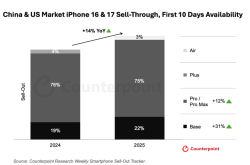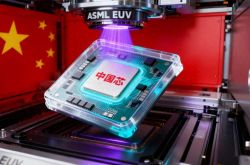Storage Power Takes Center Stage Following Computing Power
![]() 06/19 2025
06/19 2025
![]() 764
764
As Moore's Law for computing power chips inches closer to its physical limits, storage power is emerging from the shadows to take center stage, becoming the next pivotal point of competition in the AI domain.
For a considerable time, the "siloed" AI infrastructure, developed alongside enterprises' digital transformations, has operated independently, with data flowing but its value trapped in a "data quagmire." As the number of large model parameters surpasses the trillion mark and training data reaches the exabyte (EB) level, the shortcomings of traditional storage architectures have become glaringly apparent. Just as oil requires a refinery, data in the AI era necessitates a dedicated "storage engine."
The China Academy of Information and Communications Technology's "Research Report on New AI Storage (2025)" highlights that AI storage is crucial for supporting large models, directly impacting data processing efficiency, cost, and security. As a novel type of data infrastructure, storage power centers are pivotal for breaking through data circulation and integrated applications in the AI era.

The Era of AI: "Data Determinism"
The evolution of AI technology is inextricably linked to three key elements: data, algorithms, and computing power. From the 14 million images of ImageNet to the 45TB of text data of GPT-4, vast amounts of multimodal data provide AI models with abundant training material.
According to the "Data Storage 2030 White Paper," by 2030, the annual global generation of new data will exceed 1 yottabyte (YB), with a growth rate far outpacing the increase in storage capacity.
However, only approximately 3% of data in China is effectively saved, with a data retention rate just one-third that of developed countries like the United States. Massive amounts of data slip through the cracks, "generated but not collected, collected but not stored," and the immense value within ultimately dissipates into nothingness. As the "fuel" of the AI era, if data cannot be stored or utilized effectively, even the most potent computing power is akin to cooking without rice.
As stated by Zhou Yuefeng, Vice President of Huawei, in China's quest to become a data powerhouse, the focus has shifted beyond mere data accumulation to a profound emphasis on data quality. Creating high-quality data asset supply capabilities and enabling efficient, on-demand circulation of data elements will directly determine the core competitiveness of countries and enterprises amidst the digital economy wave.
Three Major Challenges in the AI-Era Storage Market
With continuous breakthroughs in AI technology, the establishment of a more efficient and reliable AI storage power base has become the norm. Currently, the storage market is undergoing three new transformations, primarily focusing on efficiency and cost.
First, as AI large models evolve towards multimodality, training data encompasses multiple sources such as internet crawlers, AI corpora, and big data platforms, with varying data types and formats. During data aggregation, the storage system must provide multi-protocol support and data-free copying functions to ensure efficient data processing and utilization.
Second, during data aggregation and preprocessing stages, which often involve the reading of numerous small files, it is crucial to ensure rapid data retrieval. During training, to prevent tasks from restarting from scratch after abnormal interruptions, saving checkpoint files during the training process is paramount.
Third, during long-sequence reasoning, computational complexity escalates with sequence length, leading to a surge in memory usage and computing power consumption. This creates a "low efficiency, high cost" disparity between reasoning speed and cost. Reducing the reasoning cost of large models and enhancing reasoning efficiency will influence the industry application process of these models.
To ignite an AI revolution across industries, a supporting storage power infrastructure is essential. To achieve this, there must be innovations and breakthroughs in storage power, both in terms of supply levels and technological innovation capabilities.
New AI Storage: A New Engine for Industry Application Implementation
In the AI era, the strategic value of storage power cannot be overlooked. Continuous innovation in storage technology will accelerate industry transformation and serve as a strategic new engine for the implementation of AI across industries.
The AI era necessitates new AI storage that aligns with its demands. Regarding what constitutes new AI storage, the "Research Report on New AI Storage (2025)" mentions that it possesses six key features: ultimate performance, data security, large model data paradigms, high scalability, data fabric, and green energy efficiency. It is an indispensable part of AI infrastructure, driving the implementation of AI applications from data aggregation, training, and reasoning perspectives:
For data aggregation, data fabric technology integrates multi-source business information, enabling users to access required data anytime, anywhere, through any terminal. By being compatible with multiple storage protocols, it significantly reduces data governance costs while enhancing cross-domain data scheduling efficiency.
In terms of training, high-performance parallel file systems can boost the training efficiency of large models. Ultra-large bandwidth and capacity support the seamless expansion of clusters with over 10,000 cards, and exabyte-level scalability accommodates massive data. Direct access technology for accelerator cards allows data to "travel directly" from storage to computing power with a single hop.
In terms of reasoning, through a multi-level KV Cache mechanism, large model reasoning gains long-term memory capabilities, enabling it to remember conversation histories and work contexts, thereby avoiding repeated explanations by users and redundant calculations by models. This not only enhances the user experience of large models but also lowers their reasoning costs.
New AI storage aids in accelerating the digital and intelligent transformation of sectors such as finance and manufacturing. In the medical field, for instance, a hospital chose new AI storage to improve the reasoning speed of a large pathology model. During gastric cancer diagnosis, it assists doctors in quickly comparing the characteristic differences between cancerous areas and normal mucosa, accurately assessing lesion risks, and effectively alleviating the workload associated with manual comparison.

Building a New Type of "Data Granary" in the AI Era
Unlike computing power, which focuses on "computing," data storage power centers on "data" and "storage," representing the comprehensive capability to process data production factors. It shoulders the responsibility of providing a steady stream of "production materials" for various scenarios in the digital economy.
Centering around the entire lifecycle of data, including aggregation, storage, governance, development, utilization, and supply, storage power centers facilitate the efficient transformation from data resources to intelligent value. They not only cater to the storage needs of large-scale data but also support technical domains such as efficient data processing, analysis, and mining, propelling the evolution from decentralized small-scale data to large-scale, integrated data, becoming the "data granary" of the AI era.
Zhou Yuefeng once noted that in the AI era, data must be ready first. In recent years, from national to local levels, and from industries to enterprises, the pace of constructing storage power centers is accelerating. Huawei is steadfastly conducting data engineering research and technological innovation, collaborating closely with partners across industries, and promoting the intensive construction of storage power centers in China to support the implementation of AI.
For example, Huawei participated in the construction of the Guizhou Main Hub Storage Power Center and Data Element Guarantee Base, which boasts a storage capacity of 50 petabytes (PB). It realizes intelligent data classification, the establishment of a trusted data space, and cross-domain data fabric to enhance data security and availability, driving local industrial development through data empowerment.
Large AI models are driving storage technology innovation. Looking ahead, new AI storage is poised to be another pivotal lever in the AI era, and "strengthening computing with storage" and "assisting computing with data" are crucial points for outpacing competitors. When the AI industry possesses a robust storage power base, it can scale new heights and witness the most breathtaking vistas of the AI era.
Are storage systems keeping up with the frenzy of large AI models? "Cold thinking" amidst the computing power craze: Decoding the rise of the "hidden champion" in the server racetrack. Where is the intelligent computing industry headed? These voices are invaluable. Li Wei from the China Academy of Information and Communications Technology: As cloud computing and AI accelerate their integration, how can we usher in a new era of intelligent computing? [Original content from Technology Cloud Report] Please indicate "Technology Cloud Report" and attach this link when reposting.








